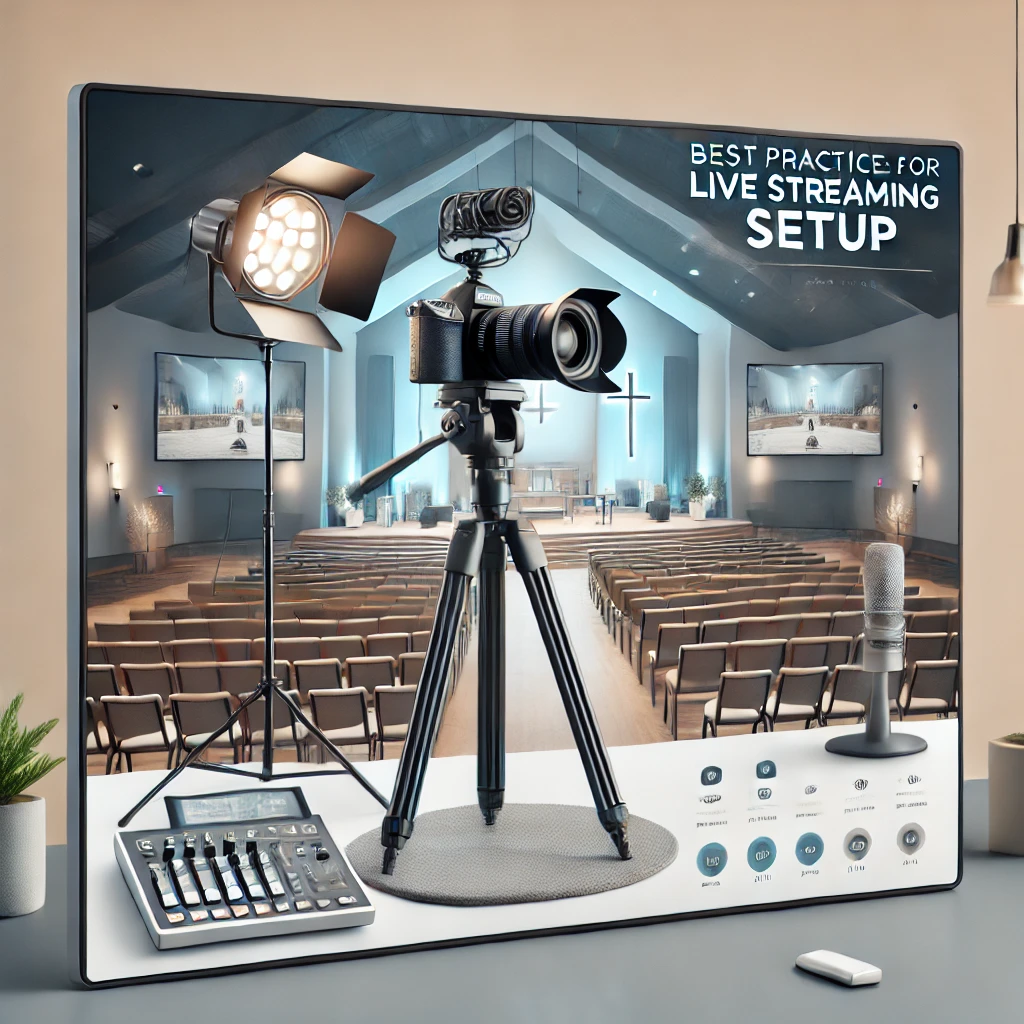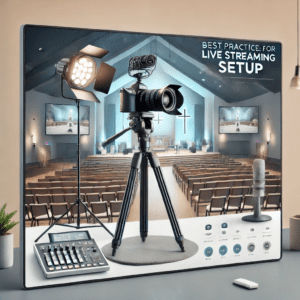Best Practices for Live Streaming Setup
Camera Placement, Lighting, and Audio Optimization for a High-Quality Live Stream
Live streaming has become an essential tool for churches to connect with their congregations and communities. Whether you’re streaming a Sunday service, a special event, or a message of encouragement, the quality of your stream significantly impacts its effectiveness. Here are some key tips to ensure your live streams stand out:

1. Camera Placement
The camera is the window to your audience, so its placement is critical:
- Keep it Simple—More production can lead to more issues. Get good at simplicity, then begin to expand to more cameras and shots.
- Positioning Matters: Always place cameras at eye level to create a natural viewing angle that mimics face-to-face communication.
- Unobstructed Views: Avoid any obstructions like podiums or other equipment that may block the shot.
- Dynamic Angles: When you are ready to expand beyond a single camera, add diverse angles to the simple center camera, keeping the audience engaged and the production consistent.
2. Lighting Techniques
Lighting sets the tone for your stream and ensures clarity:
- Bright and Even: Illuminate the stage and speakers evenly, avoiding harsh shadows that can distract viewers.
- Soft and Warm: Use soft lighting to create an inviting atmosphere. Consider diffusers for a balanced glow.
- Balanced Exposure: Avoid overexposure by balancing light levels between the subject and background, ensuring a visually appealing stream.
3. Audio Optimization
Good audio is just as important as clear visuals:
- Always test your audio post-stream. After your video is encoded and converted to live video, it changes the audio. You need to hear it on multiple devices as your audience does.
- High-Quality Microphones: Invest in microphones that deliver crisp, clear audio, ensuring your message is heard without distractions.
- Sound Balancing: If possible, use a separate mixer for the stream to maintain consistent audio levels between speech, music, and ambient sounds.
- Pre-Stream Testing: Always test sound levels before going live to identify and resolve any issues early.
Conclusion
By focusing on these three areas—camera placement, lighting, and audio—you can transform your live stream into a professional and engaging experience that connects with your audience on a deeper level.
Want More Tips?
Looking for more ways to enhance your church’s livestream? Visit our webinar archives or podcast for 100s of hours of resources, guides, and expert advice to elevate your production quality.
